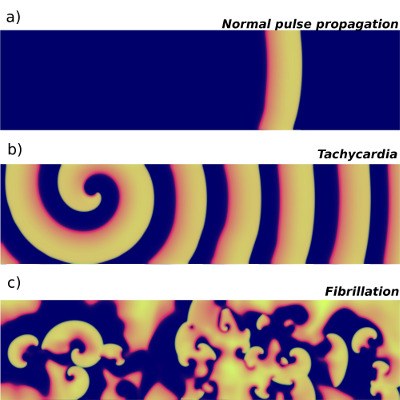Nonlinear physics of electrical wave propagation in the heart: a review
Aug 29, 2016
Sergio Alonso Markus Bär and Blas Echebarria Rep. Prog. Phys. 79 096601, 2016.
The beating of the heart is a synchronized contraction of muscle cells (myocytes) that is triggered by a periodic sequence of electrical waves (action potentials) originating in the sino-atrial node and propagating over the atria and the ventricles. Cardiac arrhythmias like atrial and ventricular fibrillation (AF,VF) or ventricular tachycardia (VT) are caused by disruptions and instabilities of these electrical excitations, that lead to the emergence of rotating waves (VT) and turbulent wave patterns (AF,VF). Numerous simulation and experimental studies during the last 20 years have addressed these topics. In this review we focus on the nonlinear dynamics of wave propagation in the heart with an emphasis on the theory of pulses, spirals and scroll waves and their instabilities in excitable media with applications to cardiac modeling. After an introduction into electrophysiological models for action potential propagation, the modeling and analysis of spatiotemporal alternans, spiral and scroll meandering, spiral breakup and scroll wave instabilities like negative line tension and sproing are reviewed in depth and discussed with emphasis on their impact for cardiac arrhythmias.

Share: